Philosophical era Ancient philosophy | Main interests Pythagoreanism Schools of thought Hellenistic philosophy | |
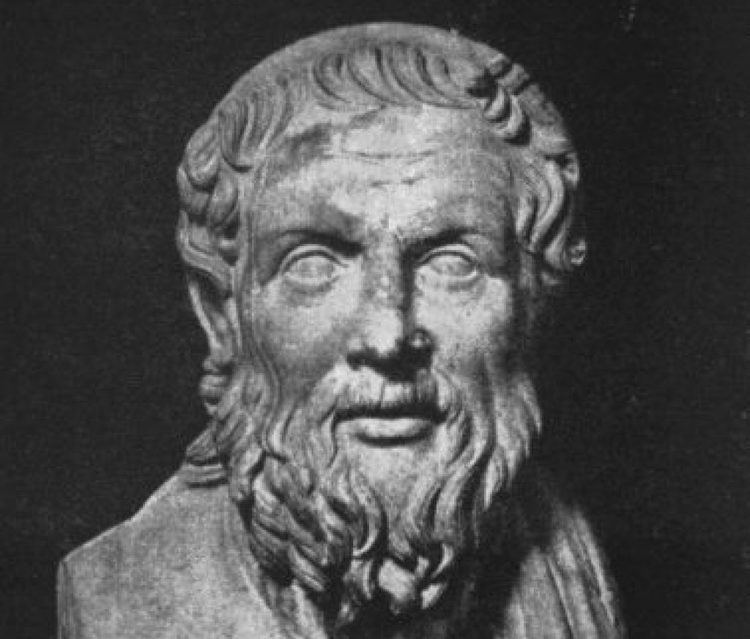 | ||
Similar | ||
Apollonius of Tyana (Ancient Greek: Ἀπολλώνιος ὁ Τυανεύς; c. 15 – c. 100 AD), sometimes also called Apollonios of Tyana, was a Greek Neopythagorean philosopher from the town of Tyana in the Roman province of Cappadocia in Anatolia. He was an orator and philosopher around the time of Jesus, and was compared with Jesus of Nazareth by Christians in the 4th century and by other writers in modern times.
Contents
- Apollonius of tyana
- Life dates
- Comparisons with Jesus
- Historical facts
- Miracles
- Journey to India
- Writings
- Antiquity
- Bah
- Modern era
- Editions
- References
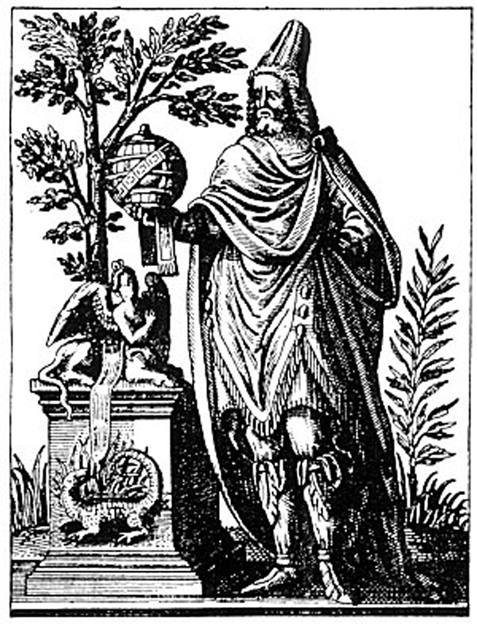
Apollonius of tyana
Life dates
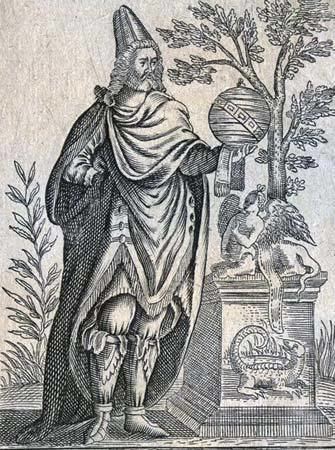
Apollonius was born into a respected and wealthy Greek family. Although the precise dates of his birth and death are uncertain, most scholars agree that he was a contemporary of Jesus of Nazareth. His primary biographer, Philostratus the Elder (circa 170 – c. 247), places him circa 3 B.C. – c. 97 A.D.
Comparisons with Jesus
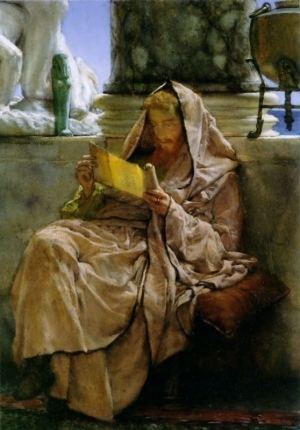
Biblical scholar Bart D. Ehrman relates that in the introduction to his textbook on the New Testament, he describes an important figure from the first century without first revealing he is writing about the stories attached to Apollonius of Tyana:
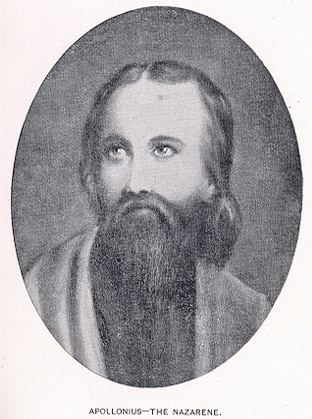
Even before he was born, it was known that he would be someone special. A supernatural being informed his mother the child she was to conceive would not be a mere mortal but would be divine. He was born miraculously, and he became an unusually precocious young man. As an adult he left home and went on an itinerant preaching ministry, urging his listeners to live, not for the material things of this world, but for what is spiritual. He gathered a number of disciples around him, who became convinced that his teachings were divinely inspired, in no small part because he himself was divine. He proved it to them by doing many miracles, healing the sick, casting out demons, and raising the dead. But at the end of his life he roused opposition, and his enemies delivered him over to the Roman authorities for judgment. Still, after he left this world, he returned to meet his followers in order to convince them that he was not really dead but lived on in the heavenly realm. Later some of his followers wrote books about him.
Ehrman goes on to say that Apollonius was a real person and that his followers believed Jesus to be a fraud.
Sossianus Hierocles argued in the 3rd century that the doctrines and the life of Apollonius were more valuable than those of Jesus', a viewpoint reportedly held by both Voltaire and Charles Blount during the Age of Enlightenment. In his 1909 book The Christ, John Remsburg postulated that the religion of Apollonius disappeared because the proper conditions for its development did not exist. Buddhism, Christianity, and Islam thrived however, because the existing conditions were favorable. In his 1949 book The Hero with a Thousand Faces, comparative mythology scholar Joseph Campbell lists both Apollonius and Jesus as examples of individuals who shared similar hero stories, along with Krishna, Buddha, and others. Similarly, Robert M. Price in his 2011 The Christ-Myth Theory and its Problems, notes that the ancients often compared Jesus with Apollonius and that they both fit the mythic hero archetype. G. K. Chesterton (the writer and Christian apologist), however, noted that the unique trial, suffering and death of Christ stand in stark opposition to the stories about Apollonius which he felt were very likely spurious.
Similarities shared by the stories about Apollonius and the life of Jesus
Historical facts
With the exception of the Adana Inscription, little can be derived from sources other than Philostratus. As James Francis put it, "the most that can be said ... is that Apollonius appears to have been a wandering ascetic/philosopher/wonderworker of a type common to the eastern part of the early empire." What we can safely assume is that he was indeed a Pythagorean and as such, in conformity with the Pythagorean tradition, opposed animal sacrifice, and lived on a frugal, strictly vegetarian diet. A minimalist view is that he spent his entire life in the cities of his native Asia Minor (Turkey) and of northern Syria, in particular his home town of Tyana, Ephesus, Aegae, and Antioch, though the letters suggest wider travels, and there seems no reason to deny that, like many wandering philosophers, he at least visited Rome. As for his philosophical convictions, we have an interesting, probably authentic fragment of one of his writings (On sacrifices) where he expresses his view that God, who is the most beautiful being, cannot be influenced by prayers or sacrifices and has no wish to be worshipped by humans, but can be reached by a spiritual procedure involving nous (intellect), because he himself is pure nous and nous is also the greatest faculty of humankind.
Miracles
Philostratus implies on one occasion that Apollonius had extra-sensory perception (Book VIII, Chapter XXVI). When emperor Domitian was murdered on 18 September 96 AD, Apollonius was said to have witnessed the event in Ephesus "about midday" on the day it happened in Rome, and told those present "Take heart, gentlemen, for the tyrant has been slain this day ...". Both Philostratus and renowned historian Cassius Dio report this incident, probably on the basis of an oral tradition. Both state that the philosopher welcomed the deed as a praiseworthy tyrannicide.
Journey to India
Philostratus devoted two and a half of the eight books of his Life of Apollonius (1.19–3.58) to the description of a journey of his hero to India. According to Philostratus' Life, en route to the Far East, Apollonius reached Hierapolis Bambyce (Manbij) in Syria (not Nineveh, as some scholars believed), where he met Damis, a native of that city who became his lifelong companion. Pythagoras, whom the Neo-Pythagoreans regarded as an exemplary sage, was believed to have travelled to India. Hence such a feat made Apollonius look like a good Pythagorean who spared no pains in his efforts to discover the sources of oriental piety and wisdom. As some details in Philostratus’ account of the Indian adventure seem incompatible with known facts, modern scholars are inclined to dismiss the whole story as a fanciful fabrication, but not all of them rule out the possibility that the Tyanean actually did visit India.
What seemed to be independent evidence showing that Apollonius was known in India has now been proved to be forged. In two Sanskrit texts quoted by Sanskritist Vidhushekhara Bhattacharya in 1943 he appears as "Apalūnya", in one of them together with Damis (called "Damīśa"), it is claimed that Apollonius and Damis were Western yogis, who later on were converted to the correct Advaita philosophy. Some have believed that these Indian sources derived their information from a Sanskrit translation of Philostratus’ work (which would have been a most uncommon and amazing occurrence), or even considered the possibility that it was really an independent confirmation of the historicity of the journey to India. Only in 1995 were the passages in the Sanskrit texts proven to be interpolations by a late 19th century forger.
Writings
Several writings and many letters have been ascribed to Apollonius, but some of them are lost; others have only been preserved in parts or fragments of disputed authenticity. Porphyry and Iamblichus refer to a biography of Pythagoras by Apollonius, which has not survived; it is also mentioned in the Suda. Apollonius wrote a treatise On sacrifices, of which only a short, probably authentic fragment has come down to us.
Philostratus' Life and the anthology assembled by Joannes Stobaeus contain purported letters of Apollonius. Some of them are cited in full, others only partially. There is also an independently transmitted collection of letters preserved in medieval manuscripts. It is difficult to determine what is authentic and what not. Some of the letters may have been forgeries or literary exercises assembled in collections which were already circulated in the 2nd century AD. It has been asserted that Philostratus himself forged a considerable part of the letters he inserted into his work; others were older forgeries available to him.
Antiquity
In the 2nd century the satirist Lucian of Samosata was a sharp critic of Neo-Pythagoreanism. After 180 AD he wrote a pamphlet where he attacked Alexander of Abonoteichus, a student of one of Apollonius’ students, as a charlatan; and suggested that the whole school was based on fraud. From this we can infer that Apollonius really had students and that his school survived at least until Lucian’s time. One of Philostratus’ foremost aims was to oppose this view. Although he related various miraculous feats of Apollonius, he emphasized at the same time that his hero was not a magician, but a serious philosopher and a champion of traditional Greek values.
When Emperor Aurelian conducted his military campaign against the Palmyrene Empire, he captured Tyana in 272 AD. According to the Historia Augusta he abstained from destroying the city after having a vision of Apollonius admonishing him to spare the innocent citizens.
In Philostratus’ description of Apollonius’ life and deeds there are a number of similarities with the life and especially the claimed miracles of Jesus. Perhaps this parallel was intentional, but the original aim was hardly to present Apollonius as a rival of Jesus. However, in the late 3rd century Porphyry, an anti-Christian Neoplatonic philosopher, claimed in his treatise Against the Christians that the miracles of Jesus were not unique, and mentioned Apollonius as a non-Christian who had accomplished similar achievements. Around 300 AD, Roman authorities used the fame of Apollonius in their struggle to wipe out Christianity. Hierocles, one of the main instigators of the persecution of Christians in 303 AD, wrote a pamphlet where he argued that Apollonius exceeded Christ as a wonder-worker and yet wasn’t worshipped as a god, and that the cultured biographers of Apollonius were more trustworthy than the uneducated apostles. This attempt to make Apollonius a hero of the anti-Christian movement provoked sharp replies from bishop Eusebius of Caesarea and from Lactantius. Eusebius wrote an extant reply to the pamphlet of Hierocles, where he claimed that Philostratus was a fabulist and that Apollonius was a sorcerer in league with demons. This started a debate on the relative merits of Jesus and Apollonius that has gone on in different forms into modern times.
In Late Antiquity talismans made by Apollonius appeared in several cities of the Eastern Roman Empire, as if they were sent from heaven. They were magical figures and columns erected in public places, meant to protect the cities from afflictions. The great popularity of these talismans was a challenge to the Christians. Some Byzantine authors condemned them as sorcery and the work of demons, others admitted that such magic was beneficial; none of them claimed that it didn’t work.
In the Western Roman Empire, Sidonius Apollinaris was a Christian admirer of Apollonius in the 5th century. He produced a Latin translation of Philostratus’ Life, which is lost.
Bahá’í
The Tablet of Wisdom written by Bahá'u'lláh, the founder of the Bahá'í Faith, names "Balinus" (Apollonius) as a great philosopher, who "surpassed everyone else in the diffusion of arts and sciences and soared unto the loftiest heights of humility and supplication." The use of talismans is commonplace in Bábí and (to a lesser extent) Bahá'í writings.
Modern era
Beginning in the early 16th century, there was great interest in Apollonius in Europe, but the traditional ecclesiastical viewpoint prevailed, and until the Age of Enlightenment the Tyanean was usually treated as a demonic magician and a great enemy of the Church who collaborated with the devil and tried to overthrow Christianity.
Comparisons between Apollonius and Jesus became commonplace in the 17th and 18th centuries in the context of polemic about Christianity. Several advocates of Enlightenment, deism and anti-Church positions saw him as an early forerunner of their own ethical and religious ideas, a proponent of a universal, non-denominational religion compatible with Reason. These comparisons continued into the 20th century.
